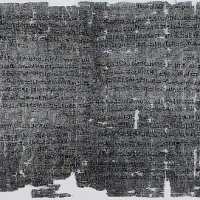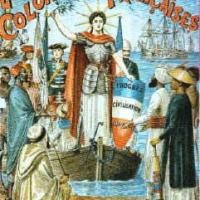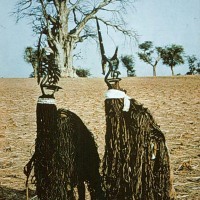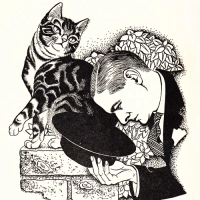Cats were – and still are – well appreciated in the Middle East and, as discussed further on, are favorably described in the Qur’an and Hadith. A charming poem written by Abu ‘Amir al-Fadl ibn Isma’il al-Tamimi al-Jurjani (d. 458/1065) exalts his cat.
The poem was included in a book about cats –The Merits of the Housecat – compiled by the precocious scholar Jalal al-Din al-Suyuti:
Al-Suyuti held various positions in his lifetime such as that of teacher of the Arabic language in 866H, he was authorized to give fatwa in 876H and he taught and dictated hadith at the University of Ibn Tuloon. He was a prolific writer, and a well-known author of the latter times. He has left behind at least a book in every branch of Islamic science that include both short monographs of few pages and tomes spanning volumes.
Some of his books are also first of their kind – and standards for those that were written after. Many of his books are published; they are easily and widely available.
The first book he wrote was Sharh Al-Isti’aadha wal-Basmalah in 866H, when he was seventeen years old.Ibn Ímād writes: “Most of his works become world-famous right in his lifetime. His ability to write was phenomenal. His student Dawudi says: “I was with the Shaykh Suyuti once, and he wrote three volumes on that day.
He used to dictate annotations on ĥadīth, and answer my objections at the same time. He was the most knowledgeable scholar in his time of the ĥadīth and associated sciences, knowledge of the narrators including the uncommon ones, the text of the hadith matn, its chain of narrators isnad, the derivation of ruling from hadith.
Source: WikipediaHe has himself told me, that he had memorized Two Hundred Thousand hadith.”
Medieval cat poem
From The Merits of the Housecat by Jalal al-Din al-Suyuti (The translator is David Larsen, see above link).
Here is the poem written by Abu ‘Amir al-Fadl ibn Isma’il al-Tamimi al-Jurjani (d. 458/1065), which al-Suyuti included in his book about cats:
I have a cat whose foot-pads I dye with hennabefore I put henna on my own newborns. Then I tie cowrie shells to her collar
to repel the harm of evil eyes. Each day, before I feed my family, I see that she gets
our choicest meats and purest waters. The playful thing. When she sees
my face contorted in a frown,
sometimes she sings, sometimes she dances,
sparing no exertion for my diversion’s sake. I care nothing for the fire’s warmth when she lies with me
in the chill of winter’s longest nights.
When I give her scratches, she gives me licks
with a tongue toothed like the surface of a file. If I avoid her, she fawns on me,
wheedling with her little high-pitched moans. If I give her trouble she will show me her claws,
a sight that gives the eyes no pleasure. When she plays with a mouse, she is at her saltiest
for she puts him through “humiliating punishment.” * When he faints from terror, she busies herself
in batting him awake with a left and a right. She teases him with feigned inattention, then
swoops like a falcon when he tries to creep away. Just when he dares hope for peace from her,
those hopes are dashed with a serpent’s liveliness. In this way do the decrees of fate ruin a man
and finish him with a cut to the aorta,
just when, amid the lively gathering,
he takes the cup of destiny from a server.
*Qur. 2:90, 3:178, 4:14 et passim.
From The Merits of the Housecat by Jalal al-Din al-SuyutiCats are not widely represented in Islamic Medieval Art – here are a few examples:

jFrom كليلة و دمنة (Kalila wa Dimna – Fables similar to Aesop’s) another version of the same painting, below. Source: unknown


Ottoman (?) Turkey. Source unknown.

Ottoman miniature. Source unknown.

Mush gorbeh (mouse and cat) ubayd zakani d. 1872. Source: unknown

John Lewis. Source unknown.

Cheeta hand-washer. Source: Walters Art Museum.

Bronze incense burner in the shape of a cat. Iran, Seljuk. Met. Museum.

ibn al-Muqaffa’s work entitled Kalila wa Dimna, which he translated from Persian to Arabic in the middle of the 8th century CE
Here are opinions about cats in the Qur’an and Hadith:
Cats According to Quran and Sunnah
WWW.MUTTAQUN.COM
Hadith – Bukhari 3:553, Narrated ‘Abdullah bin ‘Umar
Allah’s Apostle said, “A woman was tortured and was put in Hell because of a cat which she had kept locked till it died of hunger.” Allah’s Apostle further said, “(Allah knows better) Allah said (to the woman), ‘You neither fed it nor watered when you locked it up, nor did you set it free to eat the insects of the earth.’ “Hadith – Muwatta 2.13 Yahya related to me from Malik from Ishaq ibn Abdullah ibn Abi Talha from Humayda bint Abi Ubayda ibn Farwa that her maternal aunt Kabsha bint Kab ibn Malik, who was the wife of the son of Abu Qatada al-Ansari, told her that once Abu Qatada was visiting her and she poured out some water for him to do wudu with. Just then a cat came to drink from it, so he tilted the vessel towards it to let it drink. Kabsha continued, “He saw me looking at him and said, ‘Are you surprised, daughter of my brother?’ I said, ‘Yes.’ He replied that the Messenger of Allah, said, cats are not impure. They intermingle with you .’ “ Yahya said that Malik said, “There is no harm in that unless one sees impurities on the cat’s mouth.” Hadith – Muslim, Narrated ‘Aisha, Ummul Mu’minin Dawud ibn Salih ibn Dinar at-Tammar quoted his mother as saying that her mistress sent her with some pudding (harisah) to Aisha [wife of Muhammid] who was offering prayer. She made a sign to me to place it down. A cat came and ate some of it, but when Aisha finished her prayer, she ate from the place where the cat had eaten. She stated: The Messenger of Allah said: It is not unclean: it is one of those who go round among you. She added: I saw the Messenger of Allah performing ablution from the water left over by the cat. Hadith – Dawud, Narrated Jabir ibn Abdullah The Prophet forbade payment for cat.
Note: The name of Abu Hurayrah, a major authority on hadith, literally translates [as] “cat man” or “father of cats”. Both Abu Hurayrah and the Prophet enjoyed the presence of cats.
Action Items for the muttaqun [pious]:
- Do not sell a cat for money or other traded goods.
- There is no harm in the cat’s saliva unless the cat has visible impurities on its mouth.
- Feel free to have pet cats, but be sure to adequately feed and water, and provide roaming time.


























Pingback: Saudi Arabian anti-cat witchhunt | Dear Kitty. Some blog
Love your posts bunt Battuta… Keep them coming. May God reward you.
Rubina
LikeLiked by 1 person
Merci!
LikeLike
Hm, I was about to post another cat poem to my blog – but not if people are going to repost without attribution. Ms. Abuja, you need to give credit to the translator. His name is David Larsen.
LikeLike
David – Your translation is referenced, just above the poem (the link: “medieval cat poem”). Perhaps you wanted also for your name to be mentioned in blog itself, which it now is. it is a good translation, and I hope that you will do more. Readers quite enjoyed it. And apologies for any offenses to your right of authorship, none was intended. (Thanks, also for the picture from the coptic museum of the palm tree ostracon from deir el-bahri; nice.)
LikeLike
Thank you, Diana, I appreciate the credit. Good research too on those cat hadith. Most of them appear in al-Suyuti’s text, along with more poems, stories etc.
Merits of the Housecat has never appeared in print, not even in Arabic. I found it in old manuscripts here and there. When my translation comes out I must remember to let you know. Thanks again —
LikeLike
Yes – do let me know when published. I enjoyed studying hadith at the time (Berkeley) – and always enjoy going back to ‘refresh’ a bit on topics and variants. Not much time for that, though…
LikeLike
David, have you found the whole text or just quotes from it? And what’s the original title in Arabic? What a great find!
LikeLike
Very interesting. A lovely poem and some beautiful illustrations!
LikeLiked by 1 person
Thanks, Gail 🙂
LikeLike
Wonderful collection!!! I don’t know, The Merits of the Housecat by Jalal al-Din al-Suyuti. Thank you for finding this and some of the lovely art kitties, well done.
LikeLiked by 1 person
Thank you for your very kind remarks! Also, I like your book very much, and wish I had it here in Burundi.
LikeLike
I could send you a pdf of the book if you’d find it helpful? I need to make Cairo Cats into an ebook, so this project is on my list!
LikeLike
Lorraine – that would be wonderful! Cats are so popular right now, an e-book of your book is certain to be well-received. Certainly I would receive it very well!
LikeLike
Pingback: The Case for Cats in Islam and A Medieval Cat Poem from Cairo … | petlover
Pingback: The Case for Cats in Islam and A Medieval Cat Poem from Cairo … | Pet Lover News
Pingback: Nibbles: Coconut origins, Microbe genebank, Stay-green barley, Sachs may suck, Cap in hand, Wheat information, IITA birthday, Cat art, Poppy biosynthesis, Correcting names
I especially love the pictures on this art! Well done.
LikeLike
Thank you, and glad you enjoyed the blog. The pix are very nice, aren’t they?
LikeLiked by 1 person